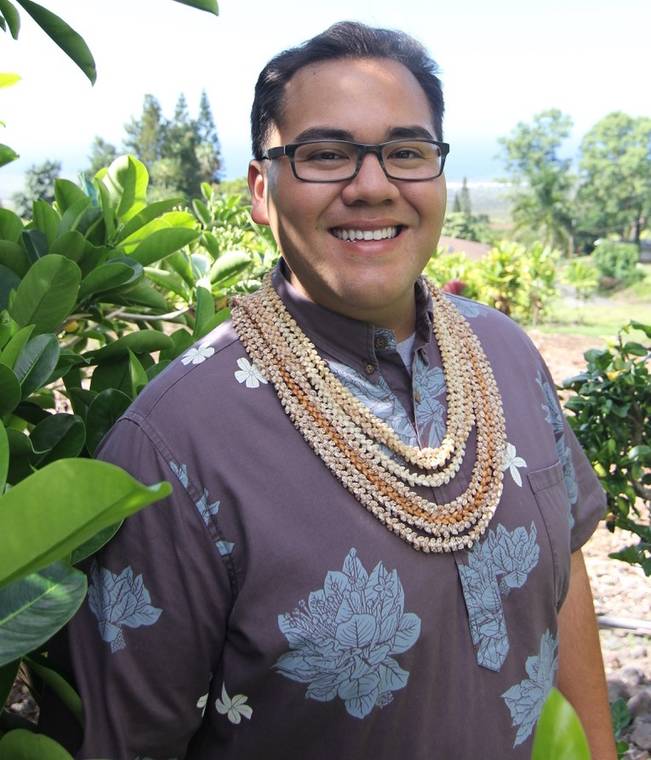Developer Palamanui Global Holdings sweetened the pot on a rezoning deal Tuesday by promising an outdoor performing arts amphitheater and affordable housing that’s more affordable, winning the massive development preliminary approval from a County Council panel.
The development, close to Hawaii Community College – Palamanui, is anticipated to include 1,116 residential units, a 30-acre university village town center with a 120-room hotel, retail shopping, commercial amenities, a 70-acre business park, a regional public park, 1,230 acres of open space and 74-acre dry forest reserve.
The development is supported by the University of Hawaii System, President David Lassner said in a Feb. 2 testimony to the council. He noted the developer has kept its promises and provided the campus financial support for the design and construction of its first building, constructed the road from Kaiminani Drive to the campus and brought the necessary electrical and water infrastructure to the campus. The campus opened in 2015.
“The University of Hawaii would warmly welcome the adjacent development of a ‘University Village’ to create a real community around our Hawaii Community College at Palamanui campus,” Lassner said. “The medium- and long-term expansion of residences, business, entertainment and recreation around the campus will encourage and facilitate growth of higher education opportunity for the people of West Hawaii.”
Developers are seeking additional amendments to what they agreed to in 2006 in order to get the property rezoned, after securing some concessions from the county in 2009.
The plan forwarded to the County Council with a favorable recommendation from the council Planning Committee contains most of what the developers asked for. It now must continue through two council readings.
“All parties worked really hard to find mutually agreeable solutions and it was great to see everybody working in that,” said Planning Director Zendo Kern.
Top on the minds of Planning Committee members Tuesday were the amphitheater and affordable housing concessions worked out by North Kona Councilman Holeka Inaba, who’s been negotiating with the developer and county Planning Department after securing a delay of the rezoning application, Bill 11, earlier this month.
“We had good discussion and I really hope that you folks get this done in what I believe is a 20-year timeline. … I think we have something workable before us,” Inaba said. “I hope this doesn’t come back to the council in 20 years. All these projects that keep coming back I think are a burden and it taxes our county resources, time and energy for the council, for the department.”
Council Chairwoman Maile David praised the developers, but also had cautionary advice for developers who return time and again to the council after agreeing to concessions as a condition of rezoning.
“It shows your willingness to support the community. … We have come a long way in how county government approves and grants applications for development for this island,” David said. “In the past, applicants would basically agree to whatever was being asked at the time with the thought in mind that later on they can come in and ask for amendments. … I’m looking at your development as setting a really positive precedence. … I respect you for that.”
Instead of a five-year deadline to commence substantial construction, the zoning ordinance now requires construction to be completed in 20 years. Instead of a 20-acre active regional park, the park has been downsized to 10 acres of active park space and 10 acres of passive open spaces. Much of the specific park requirements imposed by former South Kona/Ka‘u Councilwoman Brenda Ford in the 2009 rezoning update have been removed.
“We certainly had a lot of concerns about the park obligations that were imposed on us,” said Steve Colón, president of the Hawaii Division at Hunt Companies Inc.
Developers stood fast against Inaba’s suggested changes to the hotel, however.
“There was a robust back and forth with Council Member Inaba on the hotel,” Colón said. “We felt strongly that … the benefits of having a university themed hotel outweighed the council member’s concerns.”
Rather than having to seek detailed individual variances for street designs, parking capacity, sidewalks, building setbacks and the like, the new amendment grants any variance needed from the subdivision and zoning code need to implement the project, provided the variances conform with the master plan in the zoning ordinance and the Kona Community Development Plan.
The right of way for the Kealakaa Street extension could now be 60 feet, instead of 88 feet.
The county, in exchange, is requiring a new traffic impact assessment prior to construction of University Drive, as well as intersection improvements and traffic signals when required. There’s an approximately 31% increase in Fair Share contributions to mitigate potential regional impacts respecting police, fire, roads, solid waste facilities and parks and recreation.
Inaba’s amendment requires developers to construct affordable housing for residents making no more than 100% of the federally designated area median income, rather than the 60-140% in the ordinance. Median household income for the Kailua-Kona area is about $72,267, according to 2015-2019 census estimates.
The amphitheater will encompass 2 acres and can be part of the 10-acre park.
“Something as an outdoor amphitheater would be just incredible for our community as we don’t have any spaces like that,” said Kona Councilwoman Rebecca Villegas, “and I think the alignment with the college campus and the students and that demographic is really, really a great idea.”






